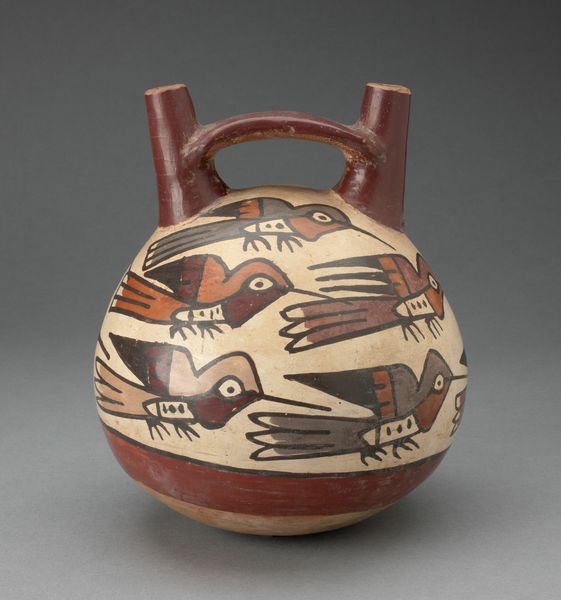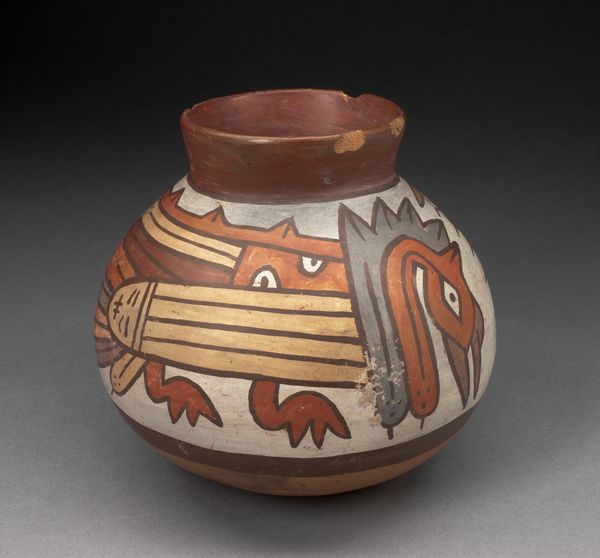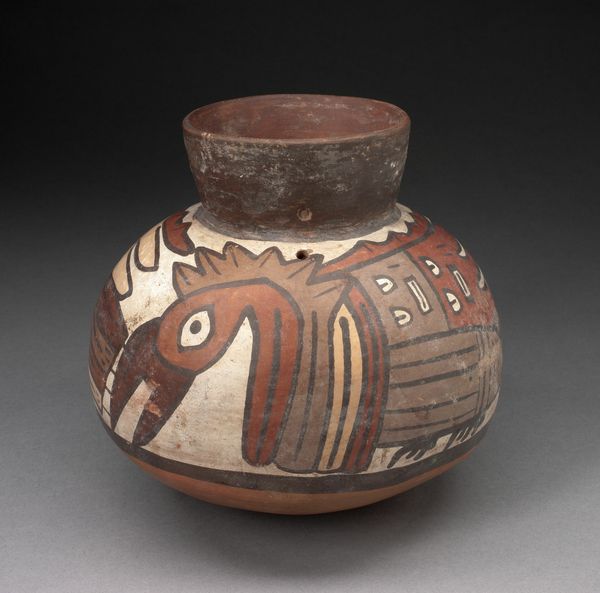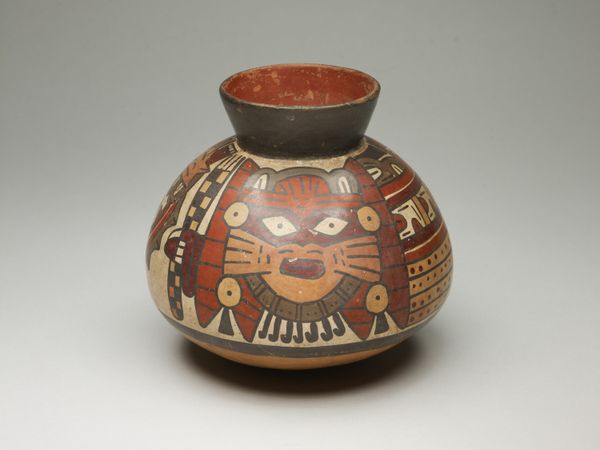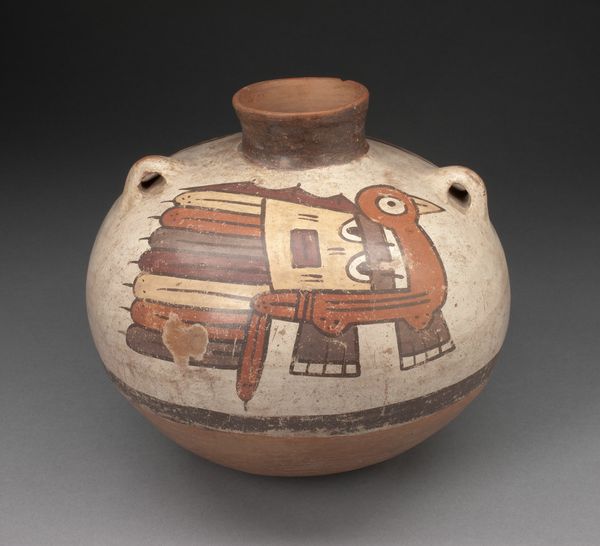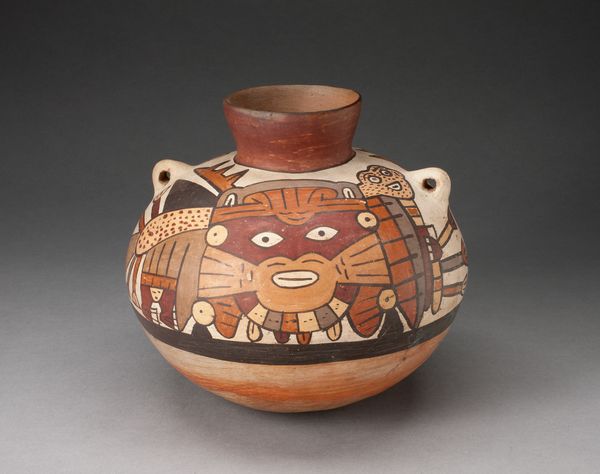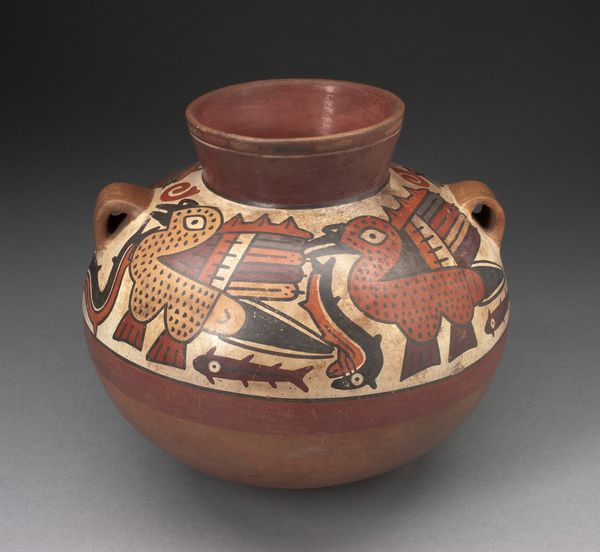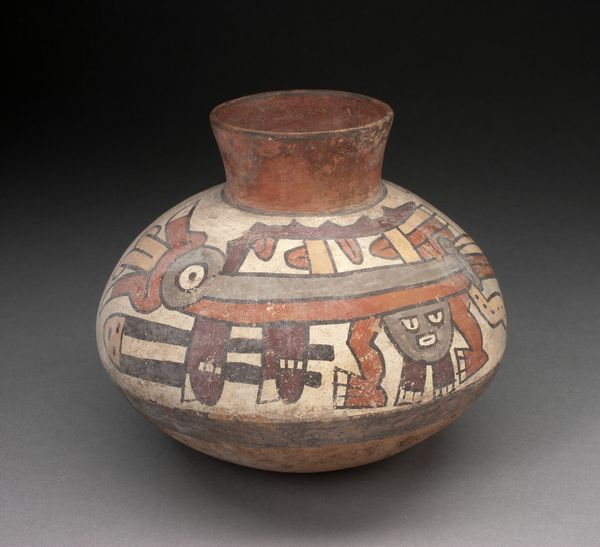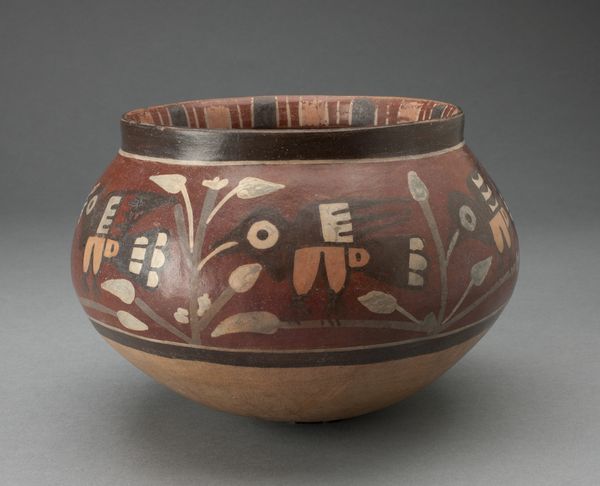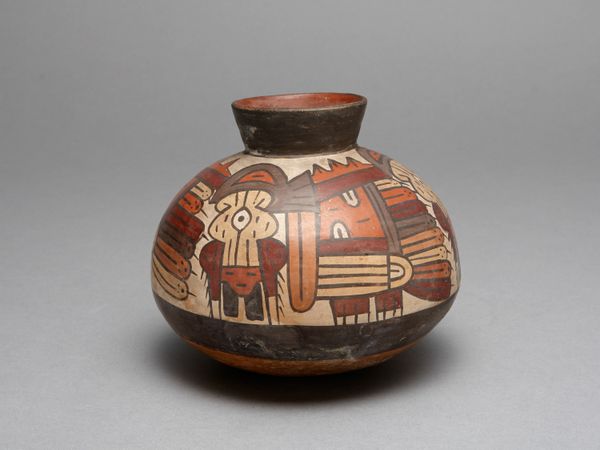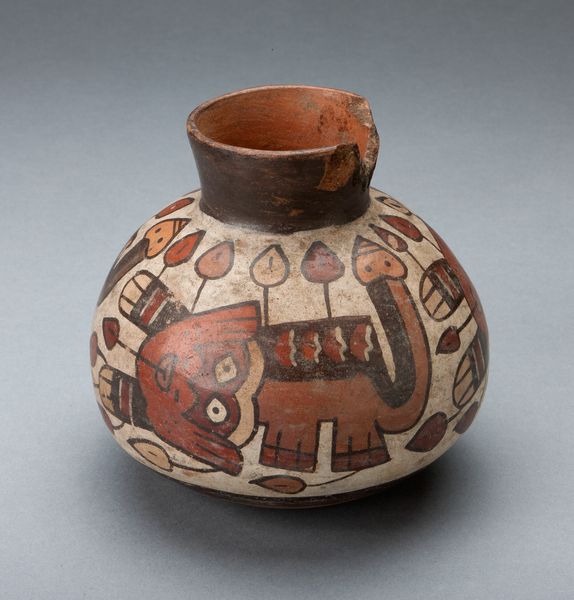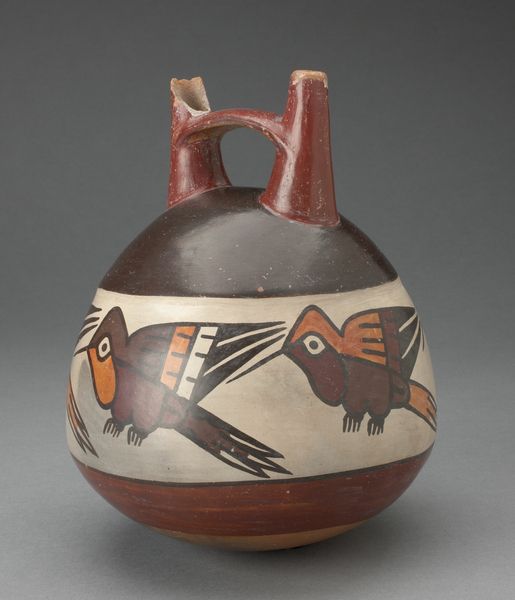
Jar with Narrowed Neck Depicting Highly Abtracted Bird or Insect c. 180 - 500
0:00
0:00
ceramic, earthenware
#
ceramic
#
figuration
#
earthenware
#
ceramic
#
indigenous-americas
Dimensions: 17.2 × 20 cm (6 3/4 × 7 7/8 in.)
Copyright: Public Domain
Curator: Oh, wow, it's like looking at ancient emojis! The creatures painted on this jar... they feel so immediate, like I almost understand what they’re saying. Editor: Exactly! What you're seeing is an earthenware jar crafted by the Nazca people, sometime between 180 and 500 AD. Its formal title is "Jar with Narrowed Neck Depicting Highly Abstracted Bird or Insect", currently held here at the Art Institute of Chicago. Curator: I love how utilitarian yet otherworldly it feels. It's clearly meant to hold something, right? But the painted figures are so bizarre and playful. They're giving me a headache trying to figure out if they are birds or insects. Editor: These abstracted figures likely had a very specific meaning for the Nazca people—possibly connected to their cosmological beliefs or agricultural practices. Their world was steeped in symbolic representation. We can decode some general themes, however. Curator: Right, and isn’t it crucial we remember that abstract art isn’t some modern invention? Indigenous artists were experimenting with representing the world abstractly way before Picasso. Look how expressive these figures are with just lines and geometric shapes. Editor: Precisely. These choices underscore how art from the Global South has often been sidelined within dominant narratives. The Nazca people deployed abstraction in sophisticated and deeply meaningful ways, defying notions that non-Western art is merely "primitive" or decorative. These kinds of binaries reflect a distinctly Western, and frankly colonial, mode of understanding art history. Curator: I wonder, if this jar could talk, what stories would it tell? Imagine the rituals it was part of, the secrets it held… And it all lives here in front of us. It whispers secrets! Editor: Indeed, each stroke represents not only artistic expression but cultural knowledge, resisting colonial erasures and reminding us that art is a tool of knowledge, survival and expression. Curator: I’ll carry with me the echo of ancient symbols as I stroll through modern landscapes today, because they keep unfolding even if in different, surprising ways! Editor: Thank you, exactly! Hopefully these impressions prompt the museum’s audience to see ancient art with fresh perspectives, dismantling colonial constructs in order to better respect art, no matter where in the world it may have originated.
Comments
No comments
Be the first to comment and join the conversation on the ultimate creative platform.

